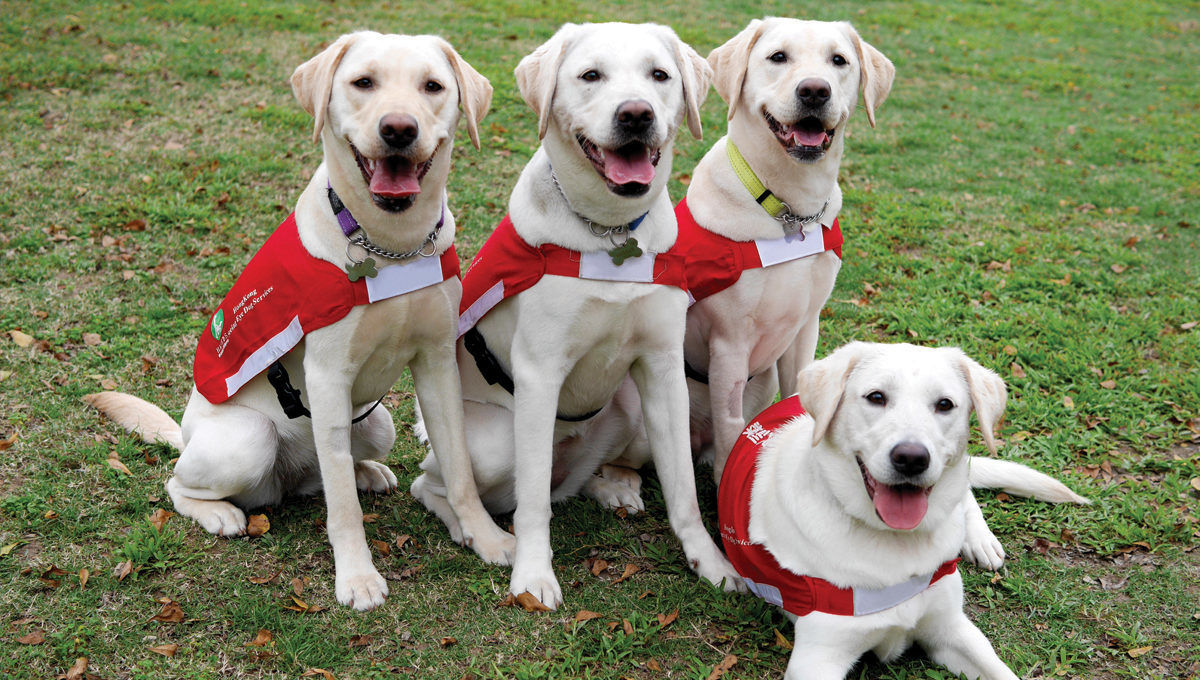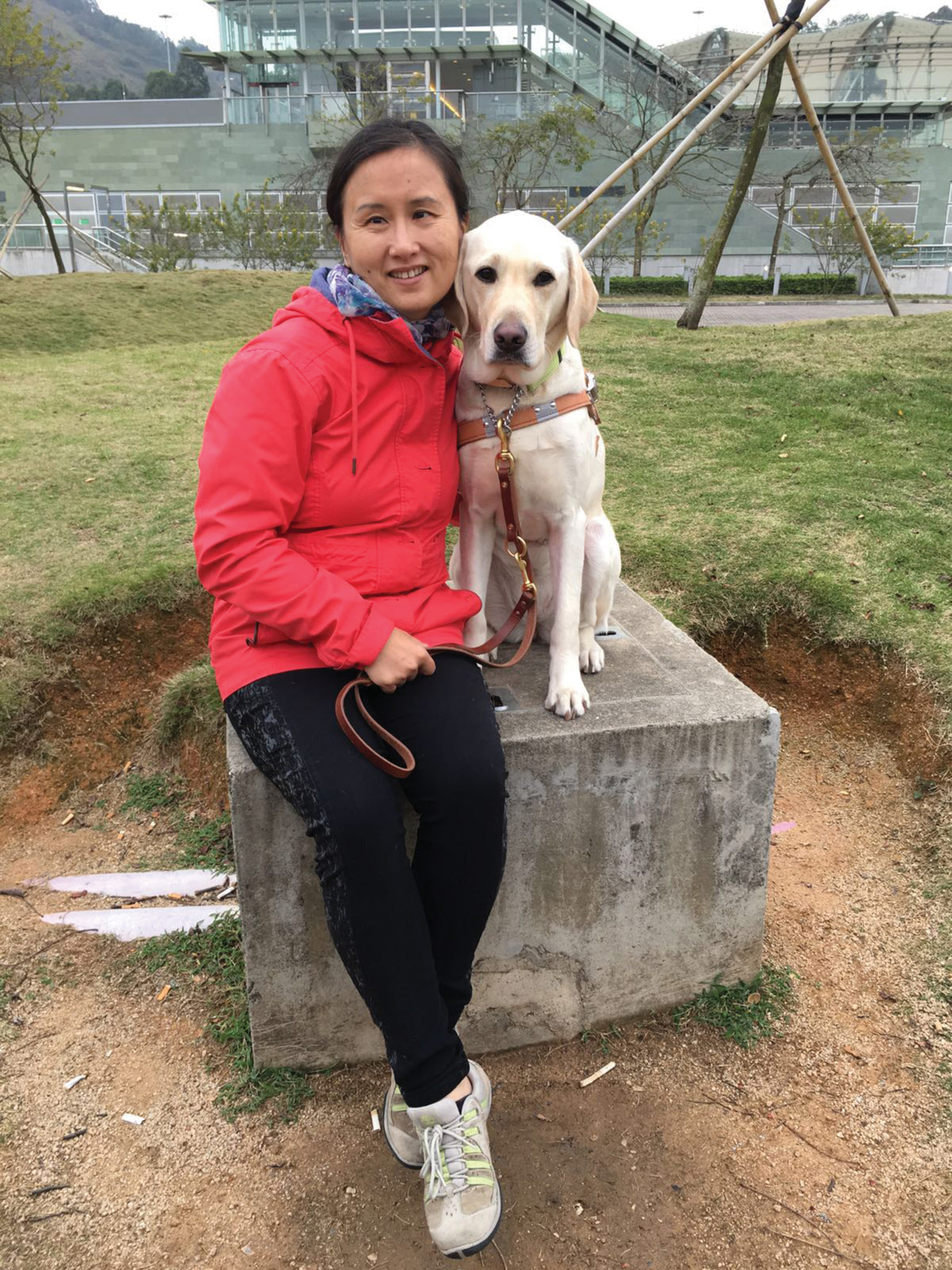It’s estimated that there are around 1,700 blind and visually-impaired people in Hong Kong who could benefit from having a trained guide dog to enhance their mobility. And, thanks to the activities of two specialist charities, some 40 guide dogs are now teamed up with grateful owners, for whom they have changed their lives. A significant number of people in Hong Kong unaccustomed to having guide dogs in shops, offices, on public transport and in public housing estates. Many well-meaning residents, workers and officials point to regulations that ban normal pets from all these places; they don’t appreciate the necessity of making an exception for guide dogs, and are largely unaware that guide dogs are exempt from bans on other animals, under the relevant Ordinance. There are inconsistencies, too: most blind people use public transport, and bus drivers generally welcome guide dogs on board – despite the fact that, technically speaking, this is illegal. But such companies take a firmer view on guide puppies in training: they are generally barred from public services, but sometimes invited to take part in special trial rides for training purposes.
Guide dogs are not created overnight
This difference in treatment of training puppies throws up another challenge: recruiting volunteer puppy trainers. Guide dogs are not created overnight: it takes between 24 and 36 months of intensive training by a sighted trainer, to transform a puppy into a mature guide dog, that is ready to take on the huge responsibility of becoming the eyes of a visually-impaired person.
An essential part of training is socialisation, in which host families take in and care for guide puppies for some months, before they go on to professional training. The puppies must also be walked in as many different environments as possible. But, because the law treats guide puppies as normal pets, only volunteer trainers who live in accommodation that is not subject to pet bans can be used.
This is slowing down the process of bringing the breeding and training of guide dog puppies to Hong Kong, replacing the inadequate supply of trained guide dogs donated from overseas sources such as Japan, Australia, the USA and the UK. Clearly, something has to change.
Raising and training guide dogs is an expensive process, typically costing around HK$200,000. Once trained, a dog is matched with its potential owner; the needs of both must be carefully considered, in order to produce a partnership that can blossom as a “team”.

Left to right: Happy, Hardos, Herbact and Holly are four 15-month-old females bred locally, and trained by Hong Kong Seeing Eye Dog Services. They’re almost ready for their missions: to be the eyes of the visually-impaired in Hong Kong.
When training stops, monitoring begins
It doesn’t end there: trainers have to keep a careful eye on teams, and monitor progress constantly to ensure the continuing success of each partnership. For example, a newly-trained guide dog may display unacceptable behaviour such as scavenging for food, that requires additional training for the dog, and instruction for the owner in how to deal with the problem.
Favoured breeds are Labradors, Golden Retrievers and cross breeds, because of their excellent natures. Short hair breeds are easier for owners to care for and groom, and they tend to suffer less skin problems in Hong Kong’s hot and humid climate. Guide dogs typically work for six to eight years, and are retired at ten years of age (or earlier, if they experience significant health problems or psychological issues that affect their work).

“Jean with her 'eyes', Bella - raised, trained and provided by Hong Kong Guide Dogs Association. The duo have been together for 4 months now. ”
Case study: Jean and Bella
Jean is one of the lucky few who already has a trained guide dog: her lovely two-year-old Labrador, Bella, was raised, trained and provided by Hong Kong Guide Dogs Association.
Jean and Bella have only been together since February, so they are still learning from each other. But Bella has already changed Jean’s life; apart from making Jean more mobile, Bella attracts attention wherever she goes, and Jean now receives far more offers of help from passers-by.
At home, Jean’s six-year-old son helps to look after Bella during her free running and leash relieving; he also grooms her and shares down time with her. Now he has a real friend to play with.
As an illustration of the current lack of awareness of guide dogs in Hong Kong, a shopkeeper recently asked Jean to tie Bella up in the street: it was like asking her to leave her eyes outside. But once the situation had been explained, everyone welcomed the dog and all other shop users were comfortable.
Guide dogs and Hactl
There had been a similar experience at Hong Kong Air Cargo Terminals Limited (Hactl): when a blind person with guide dog visited Hactl recently, everyone was surprised to see a dog walking around the offices. But, once its important role was understood, it was readily accepted and made welcome.
The charities which provide guide dogs in Hong Kong receive no government funding, and rely entirely on the generosity of the public and business.
Hactl supports both these charities, and Hactl staff are also contributing. We have all learned a lot about guide dogs, how they are trained and the vital role they play. Now, we would like to see everyone in Hong Kong embrace this initiative.

